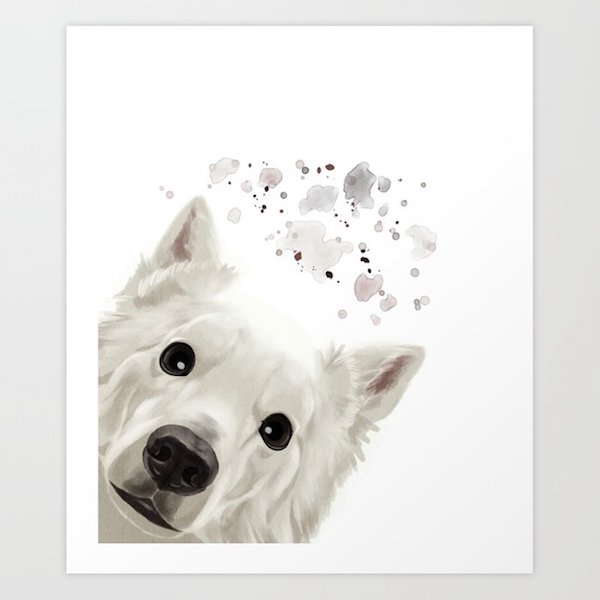
We turn to Ecclesiastes 9:11 (King James Version) to launch this post: “I returned, and saw under the sun, that the race is not to the swift, not the battle to the strong, neither yet bread to the wise, nor yet riches to men of understanding, nor yet favour to men of skill; but time and chance happeneth to them all.”
Spend any amount of time showing a dog, particularly a working and herding breed, and you’ll have noticed how some exhibitors equate speed with good movement. There are several reasons why a dog might be gaited to create a blur of motion: The dog (and handler) may be untrained, unseasoned, or inexperienced; a bitch in season may motivate a male dog behind her to get catch up and get personal. It’s also a good way to disguise faults. It’s reasonable for a judge to slow down a dog leaving scorch marks behind in order to actually see all its parts move.
That brings us to the American Eskimo Dog. Though the breed “resides” in the Non-Sporting group, it was originally bred as a multipurpose working dog on the farm. Today the breed is a beloved companion dog, but historically, they were used as herders, hunters, and haulers, and it took a sound dog to work efficiently. Poor structure resulted in a dog that got tired before the job was done, and that resulted in an unhappy owner, and possibly a poor outcome for the dog.
The “Eskie” is a trotting, single tracking breed, one that can cover the most amount of ground with the least amount of effort. In a show ring, the fastest exhibit isn’t always the best mover. Indeed, a good judge will quickly spot the dog who may not be moving his legs as fast as another entry might be, but the dog manages to put a lot of real estate behind him with a minimum of effort. Proper angulation with well laid back shoulders help accomplish this. The top of the withers, the dog’s elbows and the area just behind the front pad are all in a straight line that is perpendicular to the ground. The length of leg should be half of the height of the dog which should be a ration of 1 to 1.1 height to length, and figuratively speaking, this is etched in stone regardless of whether the dog is a Toy, Miniature, or Standard size. By “etched in stone,” we mean to say that it’s written in the breed’s AKC standard: Proportion. Length of back from point of shoulder to point of buttocks is slightly greater than height at withers, an approximate 1.1 to 1 ratio.”
This can be a challenge to ascertain from a visual examination alone because of the breed’s fabulous coat, so count this breed as one which demands a hands-on examination. A hands-on evaluation will also establish whether or not the dog being examined on the table is square. It shouldn’t be. This isn’t a cobby (or square) breed, but again, a magnificent coat can be deceptive. Trained hands and eyes don’t lie. Examining the dog after watching him or her gait around the ring helps confirm by hand what the eyes thought they saw. Ideally, this is an agile, well balanced dog who looks like s/he could work all day.
Image: “Curious American Eskimo Dog” by creative-designs is available for purchase in assorted formats here
